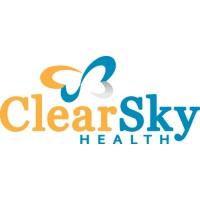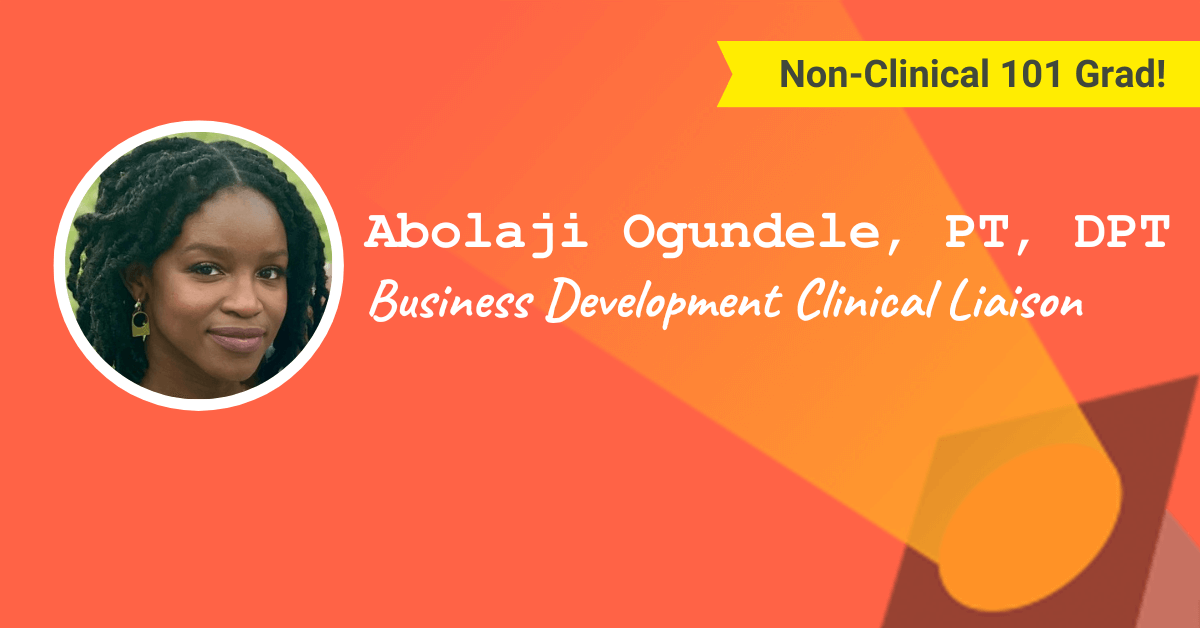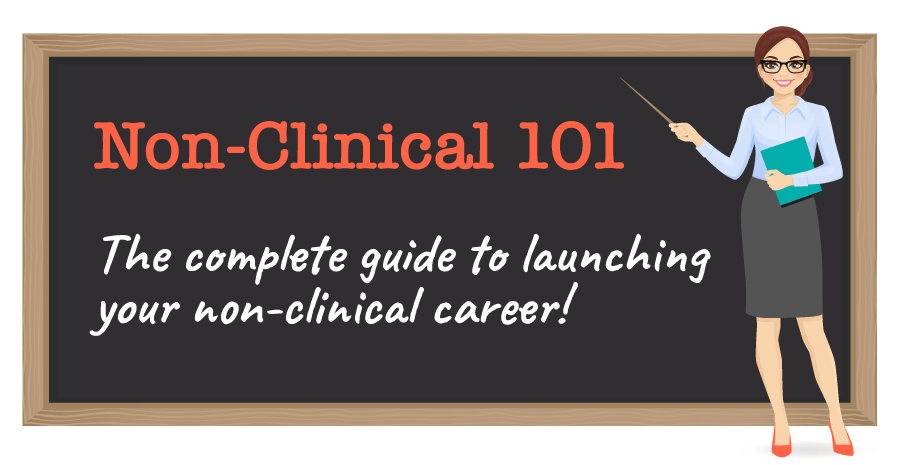This week’s spotlight is on Abolaji Ogundele, PT, DPT, a Non-Clinical 101 graduate who is now Business Development Clinical Liaison for ClearSky Health!
This post may contain affiliate links or codes. This won’t increase your cost, but it helps keep TNCPT alive, and free of annoying ads! Thank you for your support. 🙂
What is your full name, title, and company name for your current, primary role?
Abolaji Ogundele, PT, DPT — Business Development Clinical Liaison for ClearSky Health

Where are you located?
Dallas, Texas.
Where did you go to PT school, and what year did you graduate?
University of North Texas Health Science Center, 2015.
Please refrain from contacting our spotlight participants on social media. There are thousands of readers just like you out there. 🙂 Please ask your questions in the comments on this blog post.
If you’re a Non-Clinical 101 student, you can network with many of our spotlight participants in the alumni groups!
What did you do when you first finished school, and for how long?
I took my first position at a skilled nursing facility (SNF) working with geriatric populations. I was in this position for 11 months. During this time, I had a short stint in the home health setting, but I soon realized it wasn’t right for me as a new grad who was still learning and growing my skill set.
In what setting(s) did you work, and what types of patients did you treat?
I’ve worked in:
- SNFs
- Home health
- Inpatient rehabilitation
- Acute care
I mostly worked in and loved acute care, working in major hospitals in the Dallas area.
I enjoyed working with adults with cardiovascular, pulmonary, musculoskeletal, endocrine and other metabolic disorders. I most enjoyed working with neurological populations, specifically stroke survivors.
What did you enjoy about your early roles? What didn’t you enjoy?
I really enjoyed my one-to-one interactions with clients, from the most skeptical to the uber-trusting clients. It was fun to discover their motivations and drives, as well as problem solving (often in the moment) ways in which to effectively demonstrate the value of my services, so that clients could ultimately be successful.
I also really enjoyed working in cross-functional and interdisciplinary teams with physicians, nurses, therapists, etc. for patient care but especially for awesome program initiatives. Oftentimes, these diverse teams were full of different viewpoints and strong opinions.
I’ve always been a person who seeks to understand all sides and be the bridge for understanding in order to help move teams in the right direction. I was able to take on that role in the teams I was a part of.
Unfortunately, I didn’t enjoy working in the reality that our healthcare system is difficult to navigate for patients. I often had patients who were great candidates for certain interventions or facilities, but due to insurance red tape or lack thereof, my hands were tied and patients suffered.
It was also difficult in the settings in which I worked for therapists like myself to be confined to the singular box of just exercise activities and walking, when our skill sets and education focus on the whole client and their journey. Once boxed, it was difficult to navigate out.
What else have you done since then, prior to your current role?
I’ve worked as a freelance social media consultant and content creator, working with brands like 7 For All Mankind, West Elm, Rothys, and more for targeted campaigns. I had the opportunity to develop strategic partnerships, utilize market trend data, and build client trust working in this role. It was a lot of fun!
I also had the opportunity in my past PT positions to take on responsibilities outside of traditional PT roles:
- I was able to regularly lead onboarding of new staff in safe patient handling and use of mobility equipment.
- I focused on the ongoing training of staff champions while monitoring their ability to teach end users within their specific departments.
- I had the pleasure of mentoring new staff and students.
- In previous roles, I had inadvertently become a driver of SaaS adoption with the teams I worked with in order to improve workflow and communication efficiency, which I continue to love.
When and why did you decide to do something non-clinical?
I knew early on in my career that I didn’t see myself as a career-long physical therapist. At that time, I didn’t have the insight or resources to see beyond my career, let alone “walk away” from seven years of education.
I remember discovering The Non-Clinical PT website around 2017/2018, but I didn’t feel that I was ambitious enough to branch out into something different. It wasn’t until Spring 2022 that, along with some physical issues, something of a flame was lit under me. I remembered that The Non-Clinical PT was a resource, so I used it to encourage my journey.
It was also encouraging to see colleagues around me moving into non-clinical roles, most notably an old colleague of mine, Tori Korson, who also did a spotlight.
I started Non-Clinical 101 and my journey to decide what could be next for me in my career. I found I had an affinity toward relationship-management roles such as customer success and clinical liaison roles.
What are you doing these days?
I’m currently a business development clinical liaison for ClearSky Health. I work to generate patient referrals with new and existing referral sources. I also maintain and nurture existing relationships within my account in order to support patients and the business goals of our two startup rehabilitation hospitals in Mansfield and Waxahachie, Texas.
Are you still treating patients, or are you solely non-clinical?
I’m currently solely non-clinical. Up until the end of January 2024, I worked as a PRN physical therapist at my prior employer, but I decided to move to solely non-clinical work.
How long have you been in your current role?
I’ve been in my current clinical liaison role since June 2023.
Did you get any special certifications or training along the way to help you get into your current role?
I didn’t receive any special certifications, but I did complete Non-Clinical 101 and discovered that clinical liaison and customer success roles were right up my alley.
How did you find your job? Did you apply or find it through a connection?
My PT colleague Karleen, who worked PRN in my previous acute care role, had mentioned to me that she was working as a PRN clinical liaison at another ClearSky location. She briefed me on the role and what a typical day looked like. She most importantly mentioned that they planned to open two locations in the next six months.
I continued to follow up with her bimonthly. In April 2023, the role opened. I applied, and she also referred me. A few days later, I was talking to a recruiter.
Did you do anything special to your resume and cover letter to land the job?
I tailored my resume to focus on the main job descriptions, specifically relationship management, sales, clinical knowledge, and organizational accomplishments.
In the past, my PT resumes were just a description of the job roles I had performed. With the help of Non-Clinical 101, I realized I had to highlight what I’ve accomplished on the job and try to quantify as much as possible in order to stand out. This way a recruiter and hiring decision-makers can see what I bring to the position I’m applying for.
What was the interview like for the business development clinical liaison role?
I first did a phone screen with a recruiter to see if my experience was tailored to the role. It was followed up a few days later with a second round interview with the Director of Marketing and Business Development and the VP of Sales. This interview was focused on behavioral questions. The third round interview was with the CEO, and it focused on if I was a cultural fit.
I received an offer two days later. It was a surprisingly quick and efficient process. Non-Clinical 101 helped me prepare and successfully tell my story in interviews.
How have people reacted to you leaving patient care?
I had mixed reactions. My Nigerian parents questioned my decision after years of schooling, but they quickly understood the change was needed for my career growth. Colleagues and friends who knew I wanted to make a change were also supportive.
It was interesting that those who detract from my career change were random people and strangers I met during that time. When I told them about my career, education history, and my hopes for a career change, they were shocked that I would want to change rather than be a physical therapy clinic owner or something similar. But I didn’t let it deter me.
What’s a typical day or week in the life like for you? What types of tasks and responsibilities fill your time?
A typical day starts with virtual meetings to discuss operational updates and bridge communication between referral sources and my internal team members to make sure they are equipped to handle the receipt of patients. From there, I review clinical updates with current patient referrals within my portfolio of accounts and touch base with case managers, nurses and physicians, in-person or virtually, depending on the situation. If I don’t have any other referrals to follow up on, I round on existing accounts, doing discovery on their patient needs for rehab.
I also do strategic planning for my week. This usually is at the beginning of my week, where I focus on targeting potential referral sources via cold and warm sale calls, with the goal of setting up introductory lunches and events to build new relationships and referral streams with healthcare providers. I continue to work with physicians, case managers, nurses, etc. in large hospital systems, as well as other local healthcare providers, to support their patients who need inpatient rehabilitation services. I also partner with community leaders on local initiatives and projects to support aging adults in the community and bring awareness to the support that ClearSky provides.
My job is a mix of business development, marketing, and clinical review utilizing my skill set as a physical therapist to assess rehab readiness of patients.
What are some of the rewards of your role? What are the biggest challenges?
One reward of my current role is building and maintaining relationships with healthcare providers and colleagues in order to help their patients and clients be successful.
Another reward of my current role is having personal and team incentives to hit our monthly goals. It’s fun coordinating with my team to support one another.
A challenge I face in this role is the competition between other similar rehabs in my area. The Dallas-Fort Worth metroplex is very competitive and saturated with well-known rehabs, so making a name for myself and my company as a new startup was, and continues to be, an uphill climb that is getting easier as time goes on.
Also, working in a startup for not only one but two hospitals has been a huge learning curve with being adaptable to frequent changes, new processes and product offerings, and new challenges that arise as business grows.
Another challenge I face is that much of my team’s workflow isn’t really automated, which I would love to work towards as a tech lover. Oftentimes, we spend lots of time calling insurances, working between and communicating on several different SaaS platforms, utilizing different EMR softwares (some archaic), all while balancing several loads all at once.
I presented ideas to my team to improve our workflows by streamlining our technology use. We are currently in the ideation phase, so I’m excited for the possibilities.
Lastly, the biggest challenge I face is this Texas heat in the late spring and summer. I’m often driving from location to location, so being in the heat and elements can be a little brutal.
How did your clinical background prepare you for this role? Which skills transferred?
As a clinician who’s worked in high pressure and unpredictable settings, I have been equipped with so many skills, including:
- Complex, analytical thinking
- Strategic planning
- Problem-solving
- Verbal and written communication
- Organization
- Relationship management
- Implementation
- Risk mitigation
Working with so many diverse clients, as well as cross-functional team members, really aids in the work of sales and marketing. As clinicians, we understand what it means to discover a client’s needs and motivations and how we can help close the gap between their current state and their success state.
Roughly speaking, how are the hours and pay compared to patient care?
My hours vary but are primarily eight hours salaried, 8:30 am to 5 pm, Monday through Friday.
There are some days where I’m working a little later due to a late in the day referral or helping a team member. I do work weekends once every six to eight weeks to cover weekend admissions and update on any current patient referrals.
I took a small pay cut from my previous position, but with goal incentives and weekend differential, I’ve more than made up the difference. The pay definitely varies between companies.
What type of person do you think would do well in your business development clinical liaison role?
Someone in this type of role needs to be able to make friends quickly and take things on the chin. Since it is part sales, not everyone you come in contact with will have or see the need for the services your company provides. You have to continue to seek out those who will.
Also, a person in this role has to be comfortable with their plans completely changing frequently. My days are always unpredictable, which can be difficult for some but fun for others.
And lastly, a person in this role needs excellent organization skills for managing workflow tasks, patient referrals, and their book of business.
Do you work remotely or onsite?
It’s a mix of remote and onsite work, which includes traveling to the physical location of my accounts. 95% of the time, I’m out in the field visiting my accounts.
Does your organization hire PT, OT, or SLP professionals into non-clinical roles? If so, what type of roles?
Yes. More often than not, my company wants clinicians in this role. This is because only qualified clinicians can sign off on patient pre-admission screens, which are a summary of a patient’s prior and current medical and functional history that requires a signature from a clinical liaison as well as the admitting physiatrist, prior to the patient admitting into inpatient rehabilitation.
Did you read any books, take any courses, or do anything special overall to get you where you are today?
I read How to Win Friends and Influence People by Dale Carnegie. It’s a great book for sales and general relationship management.
What is a typical career path for someone in your business development clinical liaison role?
A typical career path is moving up to Senior Clinical Liaison, then to Director of Business Development and Marketing, then to higher level leadership such as National Director of Business Development and Marketing or VP.
What is next for you? What are your high-level career aspirations?
The sky’s the limit! I would love to see myself still in relationship management but with a focus more on the tech and SaaS side of healthcare because I’m obsessed with technology. So, I would desire a role in customer success or implementation management at a healthcare tech company.
What would you recommend to someone who is considering going into a role like yours? Do you have any special words of wisdom for the readers?
Continue to build bridges with everyone you meet.
Never burn bridges because a person can be your biggest advocate or a major stumbling block, depending on your past relationship with them. Thankfully, I haven’t run into the latter because a mentor made this point early in my career, and I listened.
What career advice would you give yourself that you wish you had during school?
Follow your natural affinities. What are you finding yourself concerned with most? What do you find yourself gravitating towards? What do people tell you you’re good at? Follow those things, and don’t try to force yourself into the same box as others.
Receiving a clinical degree doesn’t mean you have to stay in the clinical box for the rest of your career. Seek out help and guidance from others.





